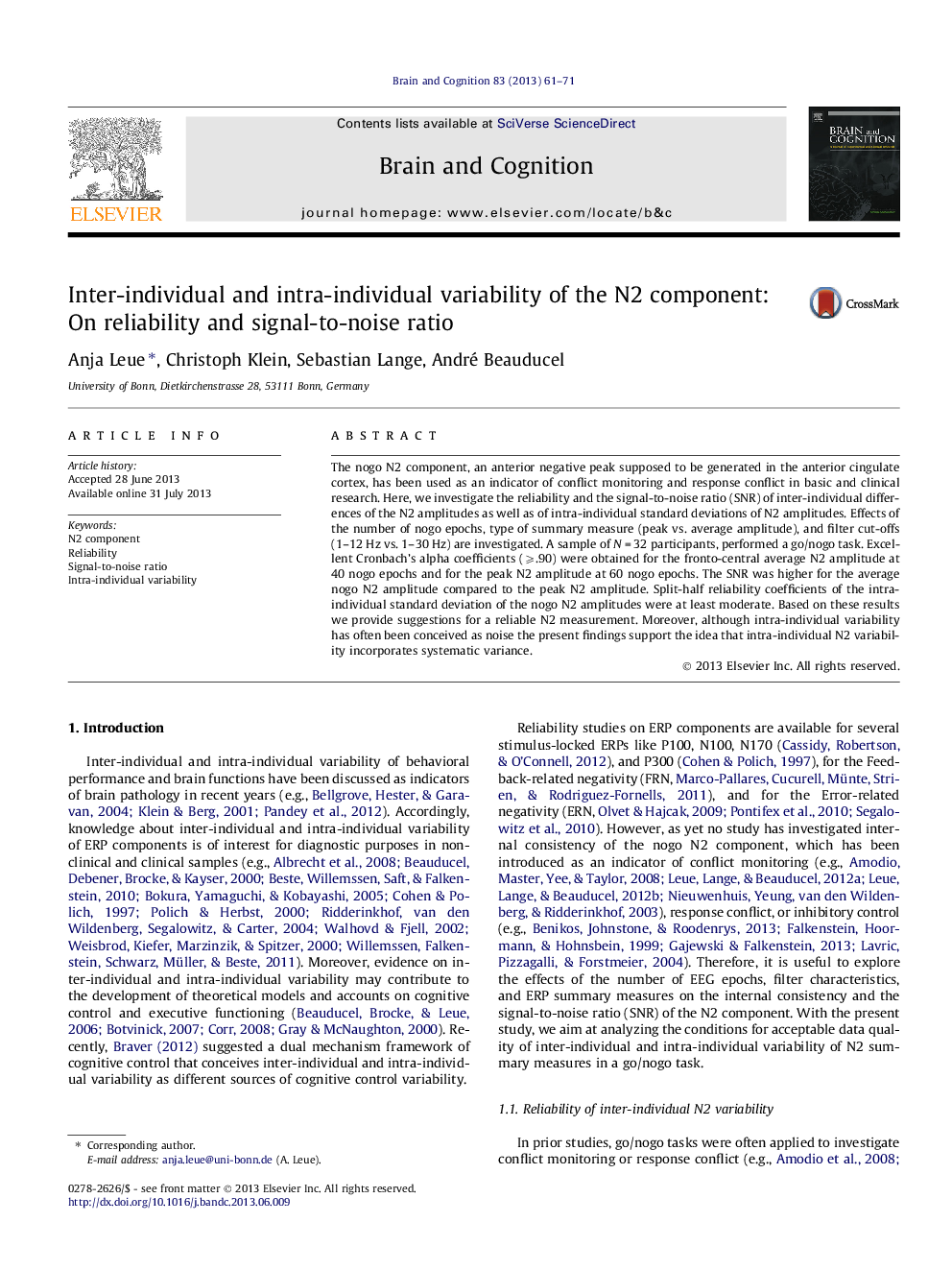| Article ID | Journal | Published Year | Pages | File Type |
|---|---|---|---|---|
| 923996 | Brain and Cognition | 2013 | 11 Pages |
•We investigated the reliability and the signal-to-noise ratio of N2 amplitudes.•With the same number of epochs mean N2 is more reliable than baseline-to-peak N2.•Signal-to-noise ratio was higher for mean than for baseline-to-peak N2 amplitude.•An 1–12 Hz filtered nogo N2 should be preferred over an 1–30 Hz filtered N2.•Intra-individual variability of the nogo N2 can be reliably measured.
The nogo N2 component, an anterior negative peak supposed to be generated in the anterior cingulate cortex, has been used as an indicator of conflict monitoring and response conflict in basic and clinical research. Here, we investigate the reliability and the signal-to-noise ratio (SNR) of inter-individual differences of the N2 amplitudes as well as of intra-individual standard deviations of N2 amplitudes. Effects of the number of nogo epochs, type of summary measure (peak vs. average amplitude), and filter cut-offs (1–12 Hz vs. 1–30 Hz) are investigated. A sample of N = 32 participants, performed a go/nogo task. Excellent Cronbach’s alpha coefficients (⩾.90) were obtained for the fronto-central average N2 amplitude at 40 nogo epochs and for the peak N2 amplitude at 60 nogo epochs. The SNR was higher for the average nogo N2 amplitude compared to the peak N2 amplitude. Split-half reliability coefficients of the intra-individual standard deviation of the nogo N2 amplitudes were at least moderate. Based on these results we provide suggestions for a reliable N2 measurement. Moreover, although intra-individual variability has often been conceived as noise the present findings support the idea that intra-individual N2 variability incorporates systematic variance.
